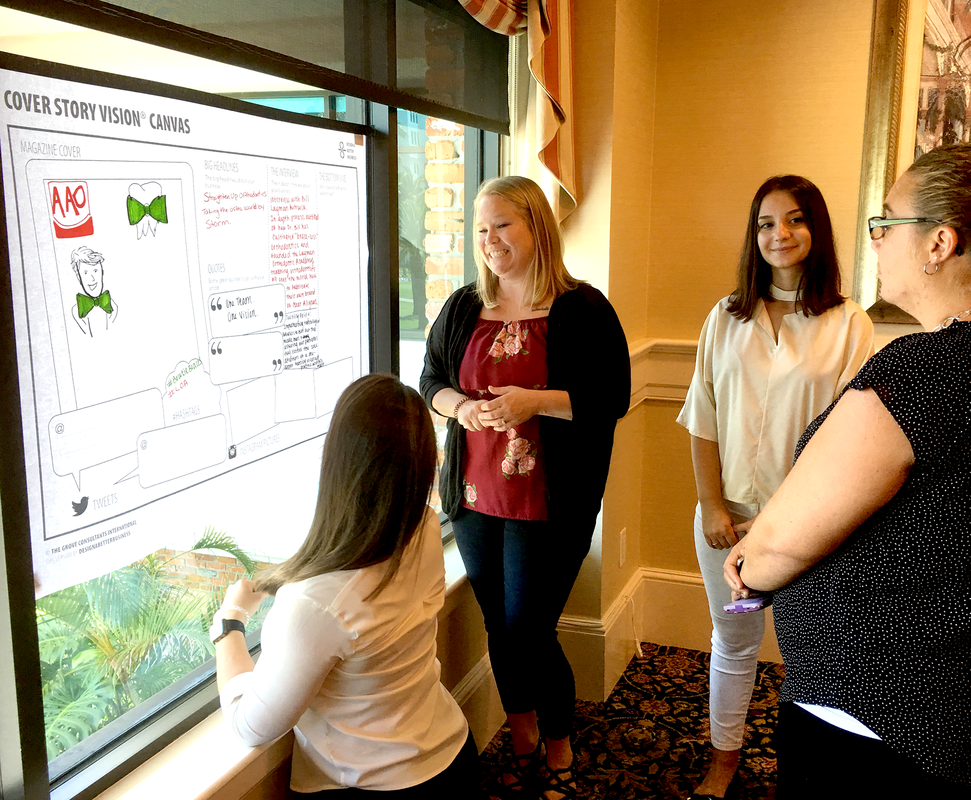|
In the midst of the pandemic, Joran Oppelt, a skilled facilitator and executive coach, played a pivotal role in reshaping the trajectory of an orthodontic clinic's business. The clinic faced challenges posed by virtual competitors like Invisalign and struggled to adapt, feeling reactive rather than proactive.
Joran's expertise in team alignment and team building became the catalyst for change. Through an extensive process of re-engineering meeting protocols, creating a clear vision and values, and establishing new communication strategies, the orthodontic clinic not only weathered the storm but emerged stronger and more resilient than before. Here’s what the Operations Project Manager had to say, “With Joran’s help, I led my team through redesigning our meetings protocol and organizational values. Thanks to his work, our company was not only able to overcome business disruptions due to COVID-19, but we were able to innovate, strategize, train, and synchronize our operations while exceeding financial goals!” Central to their success was the development of a competitive virtual offering, a strategic response to the threat posed by Invisalign. The clinic morale improved as they went from feeling like a victim to being a proactive player in the market, retaining and even expanding its patient base. The visioning process led by Joran played a crucial role in setting the clinic up for success during the challenging and isolating time of the pandemic. By defining clear vision, mission, and values, coupled with a comprehensive Team Charter, the clinic was able to ensure that everyone knew their roles and responsibilities. Most importantly, they identified and empowered the right person for the lead administrative role. Throughout the process, the team realized the need for an integrator – someone with the ability to drive these new systems and keep everything organized. This strategic shift not only streamlined operations but also accelerated the clinic's growth. Two years post-peak pandemic, this orthodontic clinic continues to thrive. Expanding their team with multiple calls for new assistants and hygienists, they are not just surviving but actively growing. The focus has shifted to marketing and patient base expansion, with a new social media and marketing plan in place. Their collaboration with a marketing company attests to their commitment to staying ahead in a competitive market. This success story is a testament to trusting in the process and the transformative power of facilitation and coaching. Joran's guidance not only helped them navigate the economic risks and cultural challenges posed by the pandemic but also set them on a trajectory of sustained growth and prosperity.
0 Comments
At Illustrious, we’ve claimed to be the Leader in Team Alignment since 2022. We know what it’s like to turn the pain of transformation into the adventure of a lifetime. We’ve seen first-hand the amazing results that our clients get by working with us. And we always find it difficult to explain them to people who are curious about what we do – or curious about whether engaging us would be a good fit. So, during our recent 2024 Power Visioning Retreat – where we took a look back at what we accomplished in 2023 and imagined what we will accomplish in 2024 – we asked ourselves the question, “How are we specifically contributing to Team Alignment?” After exchanging some quick blank expressions, we got to work brainstorming the process we see our clients go through all the time – as they move from confusion to clarity, or from a milk crate full of tangled cables into a compelling and well-organized stage show. THE ILLUSTRIOUS FORMULA FOR TEAM ALIGNMENT:
EVOKING CURIOSITY
What usually happens first with the teams we work with is they are somehow exposed to the visual tools and frameworks we use at Illustrious – whether that’s graphic recording, The Grove’s Strategic Visioning or Team Performance models, or the various visual frameworks found in Gamestorming or Liberating Structures. Either way, there is a ‘Woah!” moment that leads to curiosity. This curiosity can look like excitement or skepticism. And while we’d prefer everyone be excited right away, it’s OK for the team to be skeptical in the beginning. One particularly resistant client said, “Hold on! We’re deciding our strategy based on cartoons?!” Few people have experienced the science of visual thinking proven out in a business environment. Few people have been through a process that starts out as stickies on the wall, moves into tension and groaning and pushback, and ends up as humans witnessing each other and hearing each other without judgment. But each small win helps make the process easier for even the most resistant in the room. INTEREST Next, the visuals tend to create a focused attention. People lean in, either to learn more about the tools (usually posters on the wall or canvases in apps like MURAL), or to pick them apart and tear holes in them. It matters little to us, as long as they’re leaning in and engaged. At this point, either in the spirit of herd mentality (agreement) or pushback (disagreement), we see two camps emerge – “I’m interested in learning more” or “I’m interested in proving this wrong.” Again, the group’s interest and engagement is what matters. Once most fears are addressed, defensiveness is taken down a notch, and people are assured that no one wants to do their job for them, the group usually starts to lean in the same direction. ORIENTATION This is when the fun starts to happen. I liken this stage to a pile of metal shavings being activated by a magnet. Slowly, and one by one, the shavings will start to wiggle and vibrate. Then, they turn in the same direction, sometimes piling on top of or crawling over each other in order to answer the pull of the magnet. And, suddenly, in a rush, they are like one body – or a murmuration of birds – having one shape, one energy, one purpose. That stirring of energy and positive provocation is what it looks like when a group is oriented together and facing a problem or objective arm-in-arm. INSPIRING COMMITMENT Finally, once the team is curious, interested, and facing the same direction, the primary aim of any visual tool or communication is to inspire commitment. The team moves away from dependence and resistance, gets clearer on their roles and responsibilities, has a better grasp on the resources they need or lack, and discovers new ways to plan and make decisions. This confidence fills the team’s sails and creates a renewed feeling of camaraderie and teamwork. Culture improves, communication improves, productivity increases. Because the team is saying “Yes” to each other – and to the mission. ### If you have questions about how this looks in action or would like to see this kind of alignment happen on your team, let's schedule some time to chat. In complex business environments, leadership cannot be off-boarded or outsourced. As leaders and executives, sometimes we blame the bad things happening around us on others, or the market, or circumstance.
Things like ineffective meetings, staff turnover, teams not hitting their goals, people holding back, lack of work/life balance, and not sticking to the strategy. These have nothing to do with other people and everything to do with the way you show up as a leader. It’s been said that “people don’t leave bad jobs, they leave bad managers.” The opposite is also true. People don’t follow ideas, they follow other people. Is your mission confusing and convoluted? Are there too many initiatives to remember? Have you made your vision of the future (and their role in it) crystal clear for the team? If not, chances are they will burn out. If they stop believing in your capacity to lead, you will no longer be their leader. No amount of bonuses or self-care days will undo it. Executives and leaders experiencing complexity and overwhelm can do two things to establish leadership in complex environments:
This alignment will look more like group storytelling than strategy. It will involve all of your people and involve them in visualizing things like retrospectives, journey maps, and cones of plausibility. Consider how the diversity of voices, perspectives and competencies you convene and empower today will impact, amplify, drive, or disrupt your work in the future. Visionary leaders prepare for this long tail and are able to manage the business along multiple horizons. The emotional benefits for leaders who can do this include:
Some measurable results we have seen in leaders and businesses that can enable this kind of thinking and behavior in those around them include:
As mentioned in our book, Visionary Leadership, these types of leaders are able to do three things well:
Raise more visual leaders. Celebrate them. Watch them shine. |
Details
ABOUT THE AuthorJoran Slane Oppelt is an international speaker, author and consultant with certifications in coaching, storytelling, design thinking and virtual facilitation. Archives
March 2024
Categories
All
|




 RSS Feed
RSS Feed